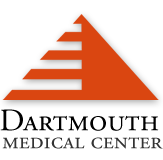FDA unveils plan to curb opioid prescription drug abuse.The
Wall Street Journal (4/20, Gleason, Subscription Publication) reports the Food and Drug Administration said Tuesday that it will require pharmaceutical companies to produce new educational tools about their opioid painkillers in an effort to reduce prescription drug abuse. Department of Health and Human Services Assistant Secretary Howard Koh said at a briefing, "This growing public-health crisis is suffocating our society."
USA Today (4/20, Ledger) reports, "American Medical Association President Cecil Wilson said his organization supports the intent of the drug abuse prevention plan but is concerned 'that a key element of this strategy that relies on industry to develop educational materials and initiatives to train prescribers could in the future become a mandatory part of the DEA registration process for prescribing controlled substances.'"
Bloomberg News (4/19, Larkin) reported, "Pfizer Inc. (PFE), Johnson & Johnson (JNJ) and Endo Pharmaceuticals Holdings Inc. (ENDP) will have to train doctors before they can give patients extended-release painkillers under a US plan aimed at reducing prescription drug abuse." The FDA said on Tuesday that "16 companies that make 25 pain patches and pills must create a program to teach medical professionals when these drugs should be used to combat pain and how to recognize signs that the treatments are being misused."
HealthDay (4/19, Gardner) noted that the "new Risk Evaluation and Mitigation Strategy (REMS) is part of a larger multi-agency initiative announced Tuesday by the White House to reduce overall prescription drug abuse" in the US. "'This new REMS will provide tools to doctors and other prescribers for appropriate pain management to reduce risks and at the same time preserve access for patients and appropriate management of pain for those suffering from moderate to severe pain,' said Dr. Janet Woodcock, director of the Center for Drug Evaluation and Research" at the FDA. "For now, the initiative will be limited to extended-release and long-acting products, which, Woodcock said, 'have a much greater risk than immediate-release because they contain more medicine.'"
Modern Healthcare (4/20, Daly, Subscription Publication) reports, "President Barack Obama's administration also will push for enactment of as-yet-unintroduced legislation to require physician participation in opioid prescribing training. But, if Congress does not enact a law "requiring mandatory physician participation in such training, the FDA could aim to tighten control on opioid prescribing through restricted formularies."
Meanwhile,
The Hill (4/19, Pecquet) "Healthwatch" blog reported that as a "first step, the FDA sent
letters to opioid manufacturers on Tuesday requiring that they provide a plan for training prescribers and educating patients about the safe use, storage and disposal of opioids. They have 120 days to respond, setting in place a regulatory process that officials hope to have in place within 12 months." The FDA missive was sent to the producers of Dolophine (methadone); MS Contin, Kadian, Avinza, Embeda, Oramorph (morphines); OxyContin (oxycodone); Exalgo (hydromorphone); Duragesic (transdermal fentanyl); Butrans (buprenorphine); and Opana ER (oxymorphone).
Also covering the story are the
AP (4/20),
USA Today (4/20, Ledger),
NPR (4/19, Hensley) "Shots" blog,
PBS NewsHour (4/19, Bowser) "The Rundown" blog,
WebMD (4/19, DeNoon), and, on its website,
CNN (4/20, Young).
 Genetic sequencing confirms armadillos can transmit some leprosy strains to humans.
Genetic sequencing confirms armadillos can transmit some leprosy strains to humans.

































